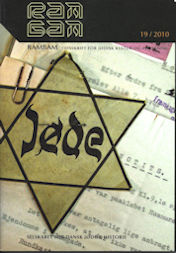Afstanden var som mellem himmel og jord
Abstract
As far apart as Heaven and Earth
The first visits of the Danish Action Group for Soviet Jews (Aktionskomitéen for Sovjets Jøder) to the USSR in the 1970s left a shocking impression. The living conditions were appalling. The situation for the Jews was hardly better than in interwar Germany.
After 1967, the USSR severed diplomatic ties with Israel. Anti-Semitism and the situation for Jews in the Soviet Union worsened considerably. The desire to leave for Israel or the USA increased, but those who applied for exit permits were denied them. They became Refuseniks, and their living conditions grew even worse.
The Western World became aware of the situation,and in Stockholm, a Scandinavian group was formed, who declared themselves ready to work for the Soviet Jews. In 1971, a world conference for the Soviet Jews was held in Brussels. It was to organize work in several European countries. The Chief Rabbi of Denmark, Bent Melchior, became a member of the presidium.
Under the management of Bent Melchior and others, two organizations were formed in Copenhagen: The Danish Committee for Soviet Jews, who attempted to give voice to the Refuseniks in e.g. the Danish Parliament and among influential organizations. Three groups were formed: a science group, a law group and a parliamentary group, who tried, within their separate areas, to influence the situation for corresponding Refusenik groups.
The Danish Action Group for Soviet Jews, on the other hand, was formed by people who were prepared to demonstrate in the streets, start petitions, etc. The authors of this article were active members of this group. The Danish demonstrators marched to the Soviet Embassy and attempted to hand over their petition with its many signatures. In April 1986, they arranged a demonstration in Rådhuspladsen in Copenhagen to raise awareness of the Refuseniks who were not allowed to celebrate Pesach with the rest of us. Exhibitions were mounted, e.g. with drawings made by children from Moscow and Leningrad.
The desire to help steadily increased and people around Europe, including Denmark, took part in journeys to Moscow and Leningrad. The purposes of these journeys were several. First and foremost, to demonstrate a desire to help and express solidarity with the Refuseniks. With them to the USSR Danish helpers brought clothes, food, books, and other goods in great demand. Our reports from the journey, which were subsequently published in Europe through the journal Jews in the USSR, were no less important. The purpose was to provide inspiration for further work to provide exit permits for the Refuseniks.
From Copenhagen, dispatch of packages and letters was organized, which has later proved to be of great importance. The Baltic Jewish Cultural Festival was held in August 1991, immediately following the ”Revolution” in Latvia. It seemed that conditions would now improve, and during this festival, friendships were established, which have evolved into permanent collaboration between the Baltic countries, Sweden, St. Petersburg and Denmark.
To begin with, the collaboration consisted in purely material help, such as food, clothing and hospital equipment, which was shipped in many containers. In St. Petersburg, the action group had gradually acquired a permanent partner in the organization Hesed Avraham. The best way to help was to collect money, which, aided by Hesed Avraham, could be distributed to the various programs for poor and sick elderly people as well as the many ill children and their families. The distance to St. Petersburg remains the same, but the ability to help has grown.





